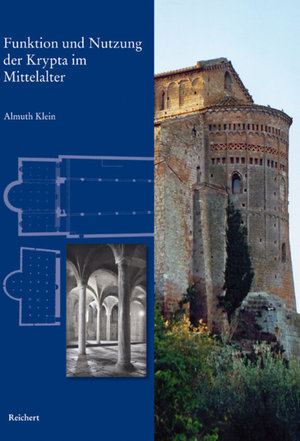
Funktion und Nutzung der Krypta im Mittelalter
Heiligsprechung und Heiligenverehrung am Beispiel Italien
von Almuth Klein
An den besprochenen Beispielbauten kann gezeigt werden, dass die Hauptaufgabe einer Krypta in der Aufnahme des Heiligengrabs gelegen hat. Dabei spielte es keine Rolle, welchen Typus der Heilige und seine Sepultur verkörperten, ob eine Bestattung am Ort des Martyriums, ein durch Translation geschaffenes Grab eines spätantiken Märtyrers und Bekenners oder die Beisetzung eines zeitgenössischen Klerikers, der sich durch seine Taten besonders hervorgetan hatte, so dass die Kanonisation angestrebt wurde. Oftmals sind mit Kirchenneubauten Kultbegründungen verbunden, so dass die Auffindung der Grabstätte einer als heilig angenommenen Person die Vergrößerung und Verschönerung der Kirche nicht nur zu rechtfertigen, sondern zu bedingen scheint. Aus dieser Tatsache kann nun leicht geschlossen werden, die Hallenkrypta setze ebenso wie die Ringkrypta das Heiligengrab voraus. Doch sie geht noch darüber hinaus. Durch Fenster, Sichtschächte und Hörverbindungen zeigt sie in der Oberkirche an, dass sich unter dem Hochaltar, im Verborgenen, das Heiligste der Kirche befindet.
Gleichzeitig schafft und sichert diese Anlage Authentizität. Sie suggeriert eine „traditio“ des Bestattungsorts und betont die Bedeutung der jeweiligen Stadt. Oftmals sind die verehrten Personen nicht kanonisiert, ein Verfahren, das sich erst im 11. Jahrhundert entwickelt. Noch liegt die Kultbegründung in den Händen des jeweiligen Bischofs oder Abts, die Bestattung in der Krypta ist gleichbedeutend mit einer Kanonisation und legitimiert den Kult; der Besitz einer vollständigen Körperreliquie ist damit die „Kapitalanlage“ der Kirche und sichert durch zu erwartende Stiftungen und Schenkungen an den Venerierten ihre Einkünfte auf unbestimmte Sicht.
Neben ihrer kultischen Funktion dienen Krypten der Vergrößerung der Grundfläche für den Bau der Oberkirche und der Nivellierung von unebenem Gelände. Dafür bietet sich die Halle an, da ihr Grundriss dem der Oberkirche folgt und ihr System aus kleinen Kreuzgratgewölben dem Bau Stabilität gibt. Die Fülle an unterschiedlichen Lösungen zeigt deutlich, dass diese Bauform den individuellen, ortsgebundenen Anforderungen entgegenkommt. Sie ergeben sich zum einen aus der topographischen Situation, zum anderen aus dem Anspruch des Bauherrn. Die Krypta hebt den Chor oder vergrößert die Kirche, sie rahmt durch ihre anspruchsvolle und kostbare Architektur mit Gewölben und Säulen das Heiligengrab und wertet die Kirche auf, deren Herr sich derartiges leisten kann.
The main function of a crypt was to house the tomb of a saint as the author shows on various examples in Italy. There is no difference between the types of saints and their sepulture: if the saint was buried on the site of his martyrdom, if the tomb contains translated relics of a Early Christians martyr or confesser or if it is a burial vault for a contemporary cleric whose canonization was intended. Often is a new church building connected with a constitution of a cult, so it seems that the discovering of a tomb of an assumed holy person not only justifies but also requires the enlargement and improvement of a church. Based on this fact one might conclude that the hall crypt implies a tomb of a saint as the ring crypt does. But there is more to it. Through windows and holes which connect the crypt and the upper church it is obvious that the most sacred is hidden beneath the high altar.
At the same time this construction establishes and confirms authenticity. It suggests a “traditio” of the burial site and emphasizes the importance of a city. The venerated persons are often not canonized, a practice developed not until the 11th century. Until then the constitution of a cult lays in the hands of the respective bishop or abbot, a burial in the crypt equates to a canonization and legitimate the cult. The possession of a whole body relic is therefore a safe investment for a church because it ensures a regular income through endowments and donations to the venerated saint. Besides the cultic function crypts enlarge the surface for the construction of an upper church and even rough area. For this purpose the hall is the most suitable form, because its layout follows that of the upper church and with a system of small groin vaults it stabilizes the building. There are numerous of different solutions and this fact shows clearly that this design meets different demands of the principal as well as of the topographical situation. The crypt raises the choir and enlarges the church, it frames with ambitious and sophistcated vaults and columns the tomb of the saint and enhances the status of the church as well as of its owner who could afford such a building.






